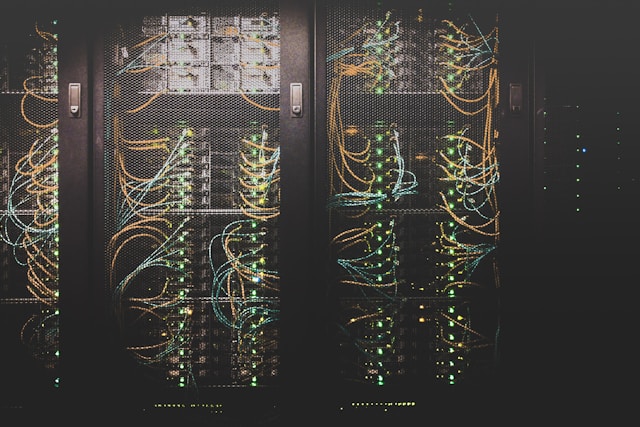The application security landscape has evolved dramatically, with threat actors deploying increasingly sophisticated tools to bypass traditional protection measures. Anti-detect browsers represent one of the most significant challenges facing DevOps, SRE, and DevSecOps teams today. These specialised tools enable cybercriminals to evade detection by masking their digital fingerprints, making traditional bot management and fraud detection systems ineffective.
The Anti-Detect Browser Ecosystem
Anti-detect browsers have evolved from niche tools into an industry of over 20 providers. The market contains established platforms and newcomers which target specific use cases. Each offers capabilities to bypass detection systems. Market Leaders
Multilogin dominates the enterprise market with cloud synchronisation and team management features. Their platform supports 100-1,000 profiles depending on plan level. They integrate residential proxy services for IP management.
GoLogin targets the mid-market with support for Windows, MacOS, Linux and Android. Their browser offers automation capabilities through puppeteer integration. The platform includes proxy chains and custom fingerprint generation.
Incogniton focuses on accessibility with lower price points and unlimited profiles. Their system emphasises ease of use for profile management. They provide extensive documentation for automation integration. Emerging Players
Kameleo distinguishes itself through mobile capabilities. Their platform can spoof iOS and Android devices from desktop systems. They offer unlimited profiles with advanced fingerprint customisation.
AdsPower targets ecommerce and marketing users. Their platform includes built-in CAPTCHA solving and form filling capabilities. They provide team collaboration features for agency use.
Dolphin{anty} emerged from the affiliate marketing space. Their platform supports up to 10,000 profiles for enterprise teams. They focus on stability for long-running automation.
These browsers incorporate:
- Browser fingerprint randomisation
- Canvas and WebGL spoofing
- Font and plugin masking
- Time zone and language control
- Cookie and cache isolation
- WebRTC leak prevention
- Residential proxy integration
The tools operate through manipulation of low-level browser APIs. They intercept and modify data points which websites use for fingerprinting. An anti-detect browser can make a Windows PC appear as an iPhone in Sydney, then switch to an Android device in Melbourne. Browser Capabilities
The market offers consistent features across providers:
- Profile management with unique fingerprints
- Cookie and cache isolation between sessions
- Proxy integration and rotation
- WebRTC and DNS leak prevention
- Automation through browser APIs
- Team management and synchronisation
- Cloud profile backup and restoration
- Mobile device emulation
- CAPTCHA solving integration
Most providers offer browser extensions and SDK access. These enable integration with existing tools and workflows. Users can build automation systems which operate through the anti-detect layer. Attack Scenarios
The combination of profiles and automation enables attacks which target core business operations: Credential Stuffing
Operators load compromised credentials into profiles which match the original user characteristics. Each login attempt appears to come from the correct:
- Geographic region
- Device type
- Browser configuration
- Network provider
This masks the attack as standard user behaviour.
Price Scraping
Attackers rotate through profiles to:
- Monitor pricing changes
- Track inventory levels
- Extract product details
- Gather competitive data
Each request appears as a new customer viewing products.
Account Creation
Profile automation enables mass creation of accounts which bypass verification:
- Each appears as a unique user
- Device fingerprints pass consistency checks
- Network origins match target demographics
- Browser configurations reflect standard users
These accounts enable fraud, scalping, and market manipulation.
Content Extraction
Operators use profile rotation to extract site content:
- Each profile appears as a standard visitor
- Session patterns match user behaviour
- Geographic distribution prevents rate limiting
- Device diversity masks automation patterns
This enables wholesale copying of proprietary content.
The Detection Challenge
Anti-detect browsers present challenges for traditional protection:
- Profile Consistency - Each profile maintains internal consistency which passes fingerprint checks
- Resource Loading - The browsers load standard resources and execute JavaScript like standard browsers
- Protocol Conformance - Network traffic follows standard patterns which evade anomaly detection
- API Integration - The browsers work with standard web APIs which makes automation detection difficult
- Proxy Integration - Built-in residential proxy support masks network origin and patterns
The Residential Proxy Problem
Your anti-bot provider relies on IP reputation and rate limiting to catch attacks. These methods fail against residential proxies which route traffic through home internet connections. An attacker in China can appear as a user in Sydney, Melbourne or Perth.
The residential proxy industry continues to expand. Services offer millions of residential IPs with rotation capabilities. The traffic becomes indistinguishable from customers without residential proxy detection.
The Mobile API Gap
Mobile applications communicate with backends through APIs which lack browser-based protection. Traditional anti-bot systems depend on JavaScript challenges and browser fingerprinting. These techniques provide no defence for API endpoints.
Attackers target these gaps through dedicated tools. Anti-detect browsers integrate with residential proxies to automate attacks against mobile APIs. The requests appear to come from mobile devices in your target market.
The Truth About Detection Rates
Anti-bot providers claim detection rates which mask the reality of modern attacks. Our tests of IP intelligence services against residential proxies reveal the gaps:
- MaxMind: 0% detection
- IP Quality Score: 24% detection
- Seon: 4% detection
- ProxyCheck.io: 0% detection
- ip2proxy: 4% detection
The best performer detected 24% of residential proxies. The others provided protection rates which approach zero.
The Impact on Business
Anti-detect browsers enable attacks which target your revenue and operations:
- Credential stuffing to take over customer accounts
- Price scraping to undercut your offerings
- Content scraping to copy your intellectual property
- Scalping to deplete inventory
- Ad fraud through fake impressions and clicks
- Account creation for fraudulent activities
These attacks bypass traditional protection through the combination of anti-detect browsers and residential proxies. Each request appears as a standard user from a residential IP.
The Way Forward
Protection requires capabilities beyond IP reputation and rate limiting:
- Network fingerprinting to detect residential proxy traffic
- Protocol behavioural analysis to identify automation
- API-centric security independent of browsers
- Machine learning to adapt to evolving threats
- Real-time adaptation to new evasion techniques
The anti-bot industry must evolve. Traditional approaches no longer suffice against sophisticated tools and techniques. Organisations need protection built for today's threat landscape.
Modern Application Security Response
Effective protection against anti-detect browsers requires a comprehensive Application Security Platform that goes beyond traditional approaches:
Advanced Threat Detection
Modern security platforms must implement:
- Non-identifying network fingerprinting to detect proxy usage without compromising privacy
- Behavioural analysis that identifies automation patterns regardless of browser masking
- Machine learning algorithms that adapt to new evasion techniques in real-time
- Multi-layer validation combining client-side and server-side detection methods
API-Centric Security
With mobile applications bypassing browser-based protection:
- API threat protection independent of browser capabilities
- Request pattern analysis to identify automated API usage
- Rate limiting and throttling designed for API architectures
- Authentication and authorisation validation at the API layer
Enterprise Integration
DevSecOps teams require:
- SIEM integration for comprehensive security monitoring
- API-first architecture for automation and CI/CD integration
- Real-time alerting with webhook and notification capabilities
- Compliance reporting for security audits and regulatory requirements
Final Thoughts
Anti-detect browsers represent a fundamental shift in the threat landscape, requiring equally sophisticated security responses. Traditional IP-based blocking and simple browser fingerprinting are no longer sufficient to protect modern applications and APIs.
Organisations serious about application security must adopt platforms specifically designed to detect and mitigate these advanced threats whilst maintaining performance and user experience. The future of application security lies in comprehensive, adaptive platforms that can evolve alongside emerging threats.
Learn more about how Peakhour's Application Security Platform detects and mitigates sophisticated threats including anti-detect browsers and residential proxy attacks through our comprehensive WAAP solution with advanced behavioural analysis and privacy-preserving detection techniques. Contact our security team to discuss your application security requirements.







